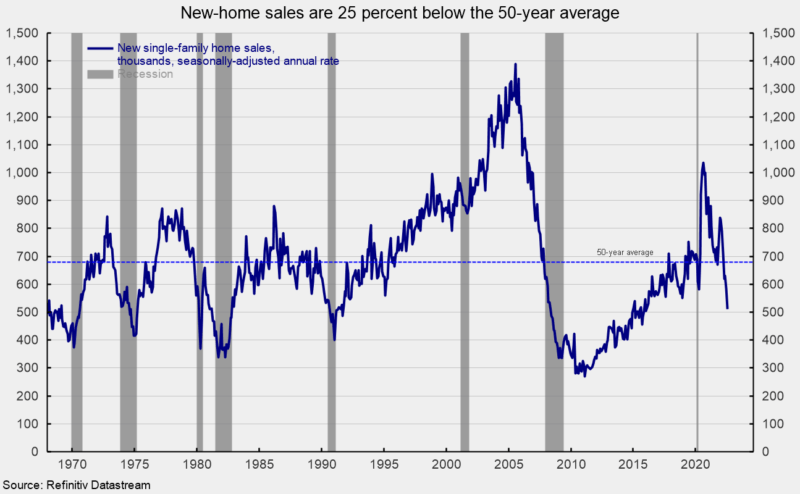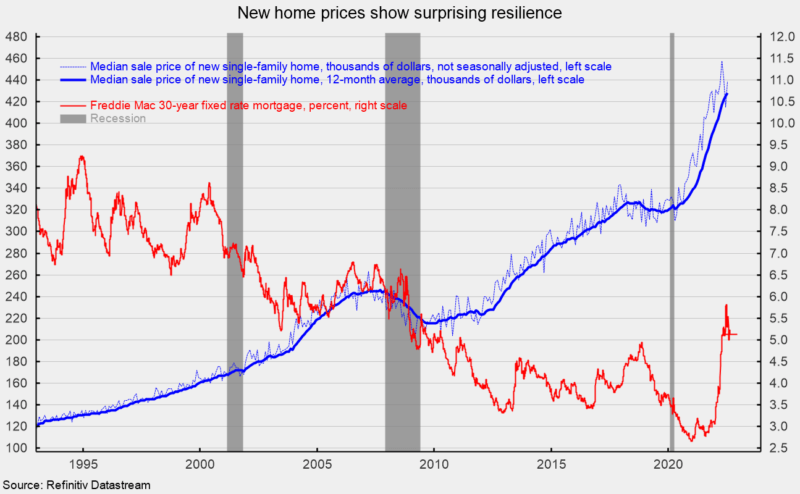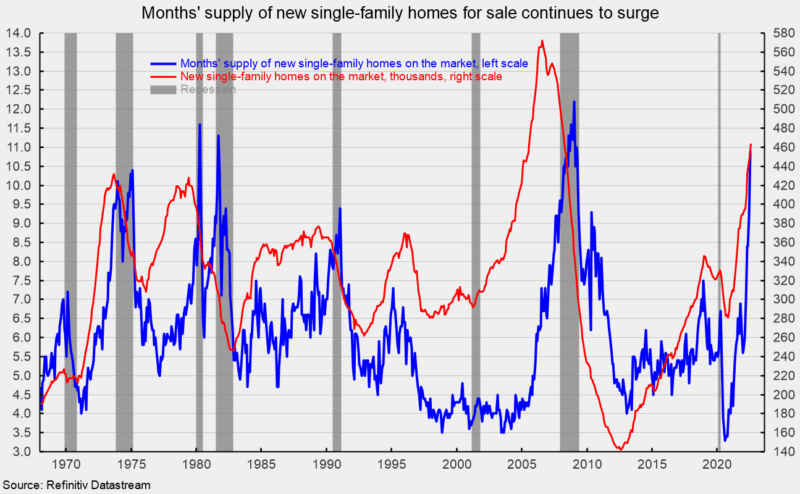New Single-Family Home Sales Continue to Plunge
Sales of new single-family homes fell again in July, dropping 12.6 percent to 511,000 at a seasonally-adjusted annual rate from a 585,000 pace in June. The July fall was the sixth drop in the last seven months, leaving sales down 39.0 percent from the December 2021 level and 51.0 percent from the August 2020 post-recession peak. July sales are now 25 percent below the 50-year average selling rate (see first chart).
Meanwhile, the National Association of Home Builders’ Housing Market Index, a measure of homebuilder sentiment, fell again in August, coming in at 49 versus 55 in July. That is the eighth consecutive drop and the first month below the neutral 50 threshold since May 2020. The index is down sharply from recent highs of 84 in December 2021 and 90 in November 2020.
According to the report, “Builder confidence fell for the eighth straight month in August as elevated interest rates, ongoing supply chain problems and high home prices continue to exacerbate housing affordability challenges.” The report adds, “Roughly one-in-five (19%) home builders in the HMI survey reported reducing prices in the past month to increase sales or limit cancellations. The median price reduction was 5% for those reporting using such incentives.”
All three components of the Housing Market Index fell again in August. The expected single-family sales index dropped to 47 from 49 in the prior month, the current single-family sales index was down to 57 from 64 in July, and the traffic of prospective buyers index sank again, hitting 32 from 37 in the prior month.
In July, sales of new single-family homes were down in three of the country’s four regions. Sales in the Midwest sank 20.6 percent for the month, while sales in the West decreased 13.3 percent, and sales in the South, the largest by volume, fell 12.1 percent. Sales in the Northeast, the smallest region by volume, rose 13.3 percent. Over the last 12 months, sales were down across all four regions, led by a 50.3 percent fall in the West, followed by a 37.0 percent drop in the Northeast, a 22.9 percent decrease in the Midwest, and a 20.8 percent retreat in the South.
The median sales price of a new single-family home was $439,400 (see second chart), up from $457,300 in June (not seasonally adjusted), putting the 12-month average price at a record high $428,000 (see second chart). Meanwhile, 30-year fixed rate mortgages were 5.54 percent in late July (and around 5.13 percent in late August), up sharply from a low of 2.65 percent in January 2021. The combination of high prices and rising mortgage rates is reducing affordability and squeezing some buyers out of the market.
The total inventory of new single-family homes for sale rose 3.1 percent to 464,000 in July, the highest since March 2008. That puts the months’ supply (inventory times 12 divided by the annual selling rate) at 10.9, up 18.5 percent from June, 81.7 percent above the year-ago level, and the highest since March 2009. The months’ supply is very high by historical comparison (see third chart). The high level of prices, elevated months’ supply, and surge in mortgage rates should continue to weigh on housing activity in the coming months and quarters. However, the median time on the market for a new home remained very low in July, coming in at 2.3 months versus 2.9 in June.








